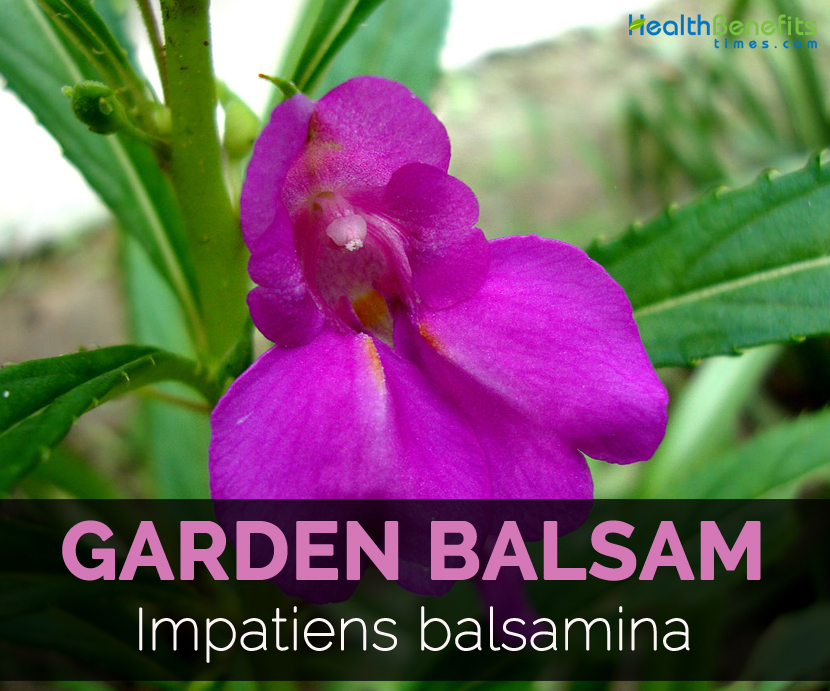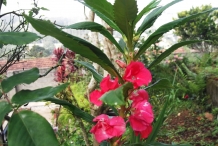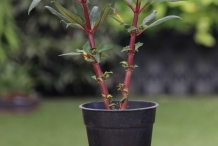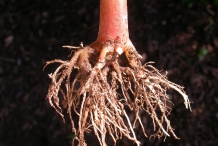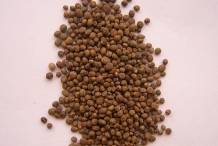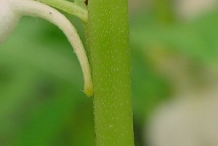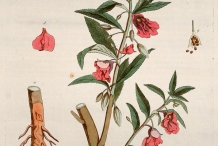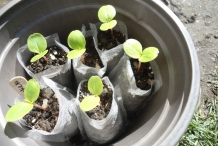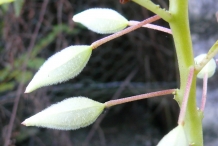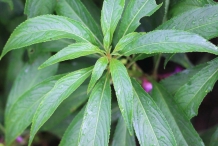Impatiens balsamina is also known as Balsam weed, Garden Balsam, Garden Touch-me-not, Jewel Weed, Rose balsam, Spotted snapweed, Touch-me-not, Touch Me Not Balsam, Garden Balsam, Impatiens, Garden Balsamine and Jewelweed. Garden Balsam is an annual plant which grows from 60 to 100 cm high. Stem are robust, erect with base measuring 8 mm in diameter. Stems are simple or branched, succulent, glabrous or laxly pubescent when young with fibrous roots and swollen lower nodes. Leaves are alternate, petiole 1-3 cm, leaf blade lanceolate, oblanceolate or narrowly elliptic measuring 4-12 × 1.5-3 cm. Pedicles are 2-2.5 cm, bracteates at base, densely pubescent and linear bracts. Flowers are pink, white or purple and simple or double petalous. Sepals are lateral, ovate to lanceolate about 2 to 3 mm. An upper petal is orbicular, apex retuse and nucronulate. An ovary is fusiform and densely pubescent. Capsule is 1 to 2 cm, broadly fusiform, densely tomentose and is narrowed at both ends. Seeds are globose, tuberculate, black to brown and 1.5 to 3 mm in diameter.
Traditional uses
- The plant is used for treating diseases and skin problems.
- Juice extracted from leaves is useful for treating snake bite and warts.
- Apply the flower to burns.
- In Asia, it is used for fractures, rheumatism and other health problems
- It is used in Korean folk medicine for treating gastritis and constipation.
- In China, the plant is used for treating bites of snakes and who ingested poisonous fish.
- The pulverized dried stalks, juice from stalk and paste made from flowers are used for treating various health ailments.
- The plant extract is used by Vietnamese to wash their hair in order to stimulate hair growth.
- Medicinally, seeds and stem are used to promote blood circulation and to provide relief from sore throats.
- In Asia, Garden balsam is used for treating fractures, rheumatism and fingernails.
- In Bangladesh, flowers are used for treating neuralgia, lumbago, scalds and burns.
- Apply the white petals juice topically for urticarial and dermatitis.
- In Philippines, leaves are used in poultice for dissolve felons.
- Leaves are used in Malaysia as a poultice for broken and torn nails.
- Root decoction is used in Brunei for irregular menstruation.
- Leaf juice is used to treat warts.
- Seed powder is provided to women during labor for providing strength.
- Flowers are used in Korea to produce an orange nail varnish.
Precautions
- Allergic people should avoid it.
- Use it in moderate amounts.
- Consult the health practitioner before treating health ailments.
How to Eat
- Petals are made into balls, dipped in a batter, shallow fried and cooked in a curry with sliced potatoes.
- Seeds powder is added to tea.
- Seeds are cooked or consumed raw.
- In China, shoots and leaves are cooked and consumed.
References:
https://www.itis.gov/servlet/SingleRpt/SingleRpt?search_topic=TSN&search_value=29185#null
http://www.hear.org/pier/species/impatiens_balsamina.htm
https://en.wikipedia.org/wiki/Impatiens_balsamina
https://www.cabi.org/isc/datasheet/28765
Awesome
Comments
| Garden Balsam Quick Facts | |
|---|---|
| Name: | Garden Balsam |
| Scientific Name: | Impatiens balsamina |
| Origin | This species is indigenous to southern Asia in India and mainland Southeast Asia. It is has been introduced into South China, southern Europe and Turkey. |
| Shapes | Elliptic to fusiform, 1.2-1.4 mm long |
| Name | Garden Balsam |
|---|---|
| Scientific Name | Impatiens balsamina |
| Native | This species is indigenous to southern Asia in India and mainland Southeast Asia. It is has been introduced into South China, southern Europe and Turkey. |
| Common/English Name | Balsam weed, Garden Balsam, Garden Touch-me-not, Jewel Weed, Rose balsam, Spotted snapweed, Touch-me-not, Touch Me Not Balsam, Garden Balsam, Impatiens, Garden Balsamine, Jewelweed |
| Name in Other Languages | Bengali: Dopati (দোপাটি); Chinese: Fèng xiān huā ( 凤仙花), Fèng xiān tòu gǔ cǎo (凤仙透骨草), Jíxìngzi (急性子), Zhǐjiǎ huā (指甲花); Finnish: Mummonpalsami; Gujarati: Gulmendi (ગુલમેંદી); Kashmiri: Tatur (ततूर्), Ban-til (बन्-तिल्); Malayalam: Mechingam, Thottachinungi, Thilam Oonappuu (തിലം ഓണപ്പു); Marathi: Gulmendi (गुलमेंधी), Terada (तेरडा); Oriya: Haragaura; Russian: nedotroga bal’zaminovaja, недотрога бальзаминовая; Telugu: Gulivinda (గులివింద), Mudda Gorinta (ముద్ద గోరింత); Vietnamese: cây bông móng tay; Bangladesh: Dopati; Burmese: Dau Dalet; Chamorro: Kamantigi Chuukese: Pee-Cha, Pee Cca; Dutch: Juliaantje; French: Balsamine Des Jardins, Impatience; German: Balsamine, Gartenspringkraut; India:- Hindi: gulmendhi, Gulmehendi (गुलमेहंधी), गुलमेहद; Kannada: Karnamamdala (ಕರ್ಣಮಮ್ಡಲ); Sanskrit: dushpatrijati, Dushparijati (दुष्परिजती); Siddha: Kasittumbai, Tamil: Kaci-t-tumpai (காசித்தும்பை); Urdu: Gul Mehendi (مينہدي گل); Indonesian:- Javanese: Pacar Banyu, Minangkaba u: Paru Inai, Pacar Air Japanese: Tsurifune-Sō; Korean: Bongseonhwa; Malaysia:- Sarawak: Bunga Embung, Bunga Tabo, Hinai Ayam, Hinai Pacak, Inai Air, Lak Kecil, Dandalet; Palauan: Hosengka; Philippines:- Bikol: Suranga, Bisaya: Solonga, Suranga, Iloko: Kamantigi, Pampangan: Kamantig, Sulu: Saungga, Tagalog: Kamantigi; Russian: Nedotroga Bal’zaminovaja; Samoan: Patiale; Spanish: Balsamina, Chico, Chachupina, Madama; Swedish: Balsamin; Thai: Thian Baan, Thian Suan, Thian Dok; Tongan: Polosomo; Vietnamese: Bóng Nước, Móc Tai, Cây Bông Móng Tay, Móng Tay; Chamorro: kamantigi; Chuukese: pee cca, pee-cha; Palauan: hosengka; Cuba: madama; Netherlands: Balsemien; Saint Lucia: busy-lizzie |
| Plant Size | 60 to 100 cm tall |
| Stem | Erect, robust |
| Leaves | Spirally-arranged, 2.5-9 cm long and 1-2.5 cm broad |
| Flowering Season | July to October |
| Flower | White, orange, pink-red or purple, 25-30 mm long |
| Fruit shape & size | Elliptic to fusiform, 1.2-1.4 mm long |
| Seed | Black-brown, sub-globose, 1.5-3 mm in diameter, tuberculate |


